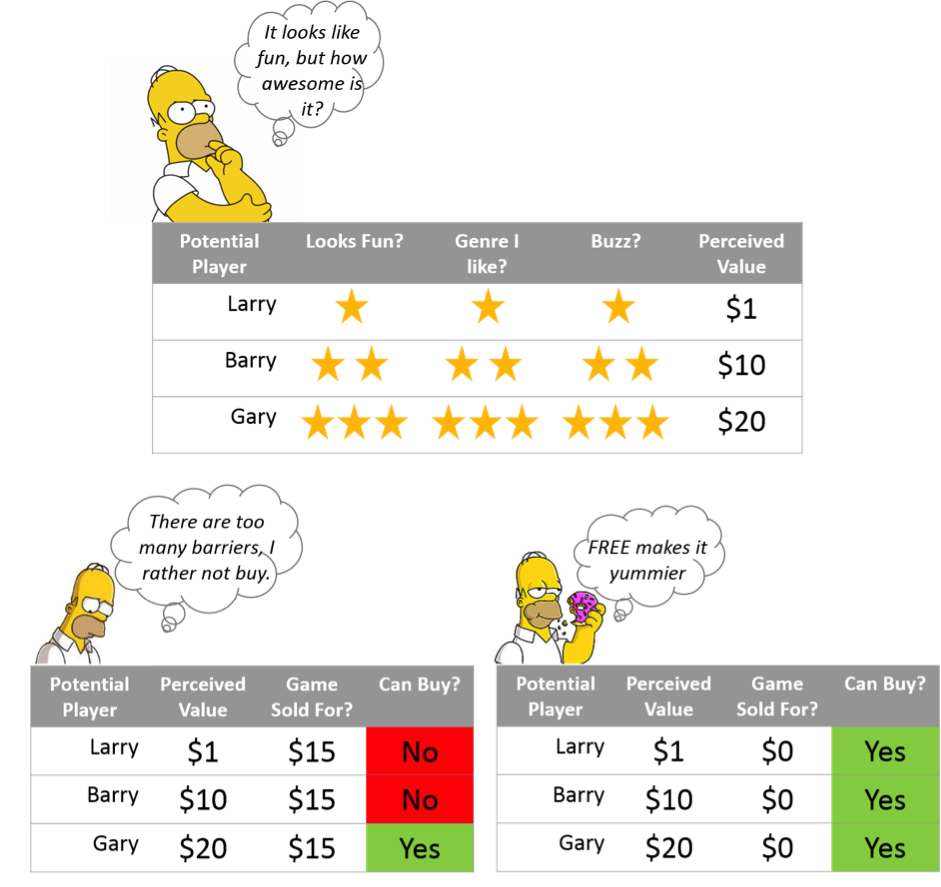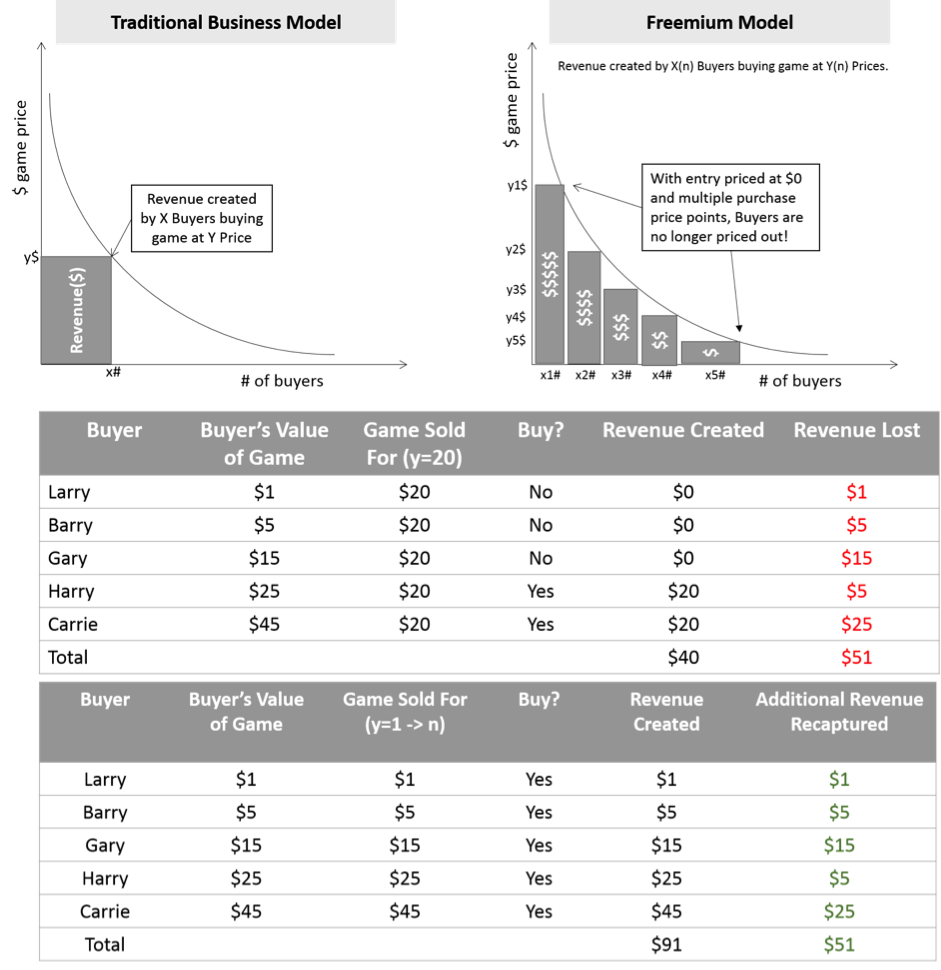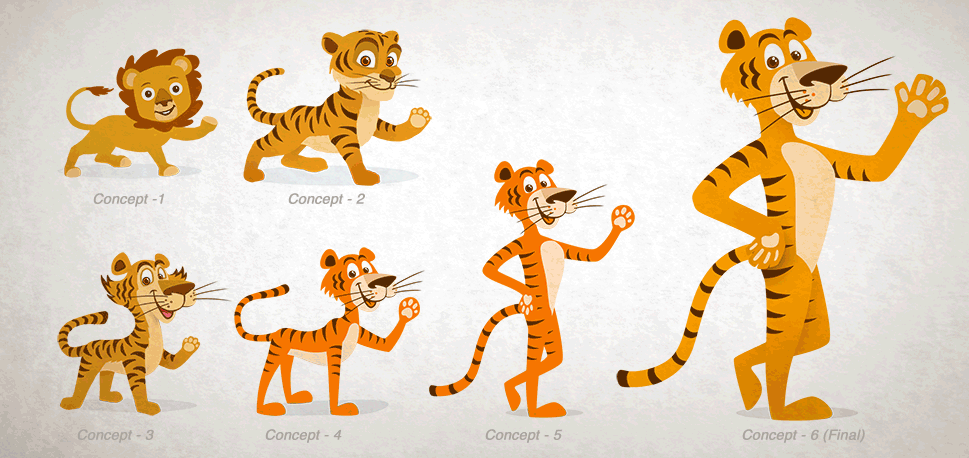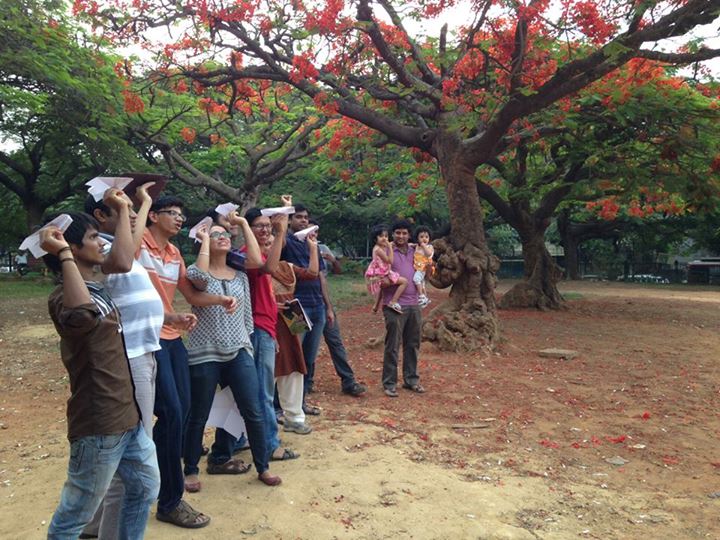Freemium has become the preferred business model in mobile game development, accounting for almost 93% of mobile gaming revenue in 2013. Many, if not all game developers around the world have adapted their mobile development strategy to harness the power of freemium. As counter intuitive as it may sound, “Freemium” games are in-fact more lucrative than one time purchase games (premium games). If you don’t believe me, then go see the highest ranked games in terms of gross revenue, and there will always be a freemium game in the top 5.
How can a free game earn more revenue?
Well for one, it lowers your barriers to play the game (mainly the cost). However, there are many factors that go into the age old question, “Do I want to play this game?” As a consumer (or a hard-core gamer, if you are one), we always consider factors such as, is this game going to be fun? Or is this the type of game I like? We then price out what the perceived value of the game is to us and then shell out the necessary dollars to buy the game. However in a freemium model, everyone is allowed to play, including Larry and Barry (see below)!
Price discrimination is the key
So here are the conclusions from our illustration above, traditionally, a single price point was given and you were either in or out. Even if you were in, it’s a one size fits all type of affair. You love this game so much, and even $75 does not seem too bad for such a game? Well, too bad. In addition to losing the revenue upside, by excluding players who have perceived your game to be of higher value, you are also losing the revenue downside, by pricing your game higher than the perceived value.
To sum it up, Freemium games allow you to price yourself within the game. The revenue upside in the game is a factor of the engagement and the player investment you can have within the game. In the above example, it has in fact almost doubled the revenue that would have been possible with a premium game.
The Evil Side of Freemium Gaming
Well Freemium models in a casual gaming market seem like a no brainer right? Well, it’s not that simple. With hard-core gamers who can purchase a fully featured game between $1 – $100, may now possibly have to shell out a lot more to enjoy the full power of a game. A case in example of the recent launch of “The Dungeon Keepers” game and this reviewer’s scorn for the pricing of the appointment mechanics within the game. It’s very important to remember that a player’s investment in the game should always be balanced out with reasonable opportunities to grind through the game, without making it seem like a Pay to Win strategy.
What do you think?
Freemium Business Models seem to be here to stay in the mobile gaming market. Low barriers to entry means that there will be a lot of games to choose from. Lots of games in the market means a lot of noise and a lot of noise means, it gets harder to stand out. Also with integrated payment systems built into mobile platforms, it makes purchases of in-app consumable items all that easier. As a nation that’s out to build revolutionary products, do you see yourself adapting some of the best practises from this model? Do let us know in the comments below.








